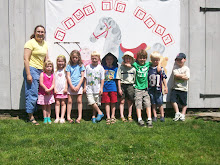I've asked "How much do you want to raise?" many times in many different circumstances. The most frequent answer is also the worst possible answer - "As much as possible!"
I hate this answer.
- First, it makes me think that the fundraisers aren't working from a budget. Huge mistake.
- Second, I wonder if they really have a good understanding of their project - its funding needs - its earning capacity etc.
- Third, it's just so passive. When should we ever be happy with whatever happens?
- Fourth, how can we possibly judge whether the fundraising effort is a success or a failure if the goal is "as much as possible"?
- Finally it seems naive, and even small, first-time, fundraisers can and should be smart fundraisers.
Budget
First and foremost make a budget before you go public. Make a budget for the project you are working to accomplish as well as a budget for your fundraising effort. Let's say the project is a playground. The budget should include equipment, shipping, installation, play surfaces, signage, insurance, landscaping and everything else you can think of to shepherd this project from start to finish. Total it all up, subtract any money you have on hand, and the rest is getting close to your fundraising goal. Add a 10% contingency and then add the costs of your fundraiser and you finally have your goal.
This number is going to help you determine how hard you have to work at your fundraising and most importantly what type of types of fundraising you need to undertake. Is it bake sale fundraising or is it all out capital campaign fundraising? You can't decide until you have a budget and goal.
Know Your Project Inside and Out
You can't finalize a budget and you certainly can't conduct a successful fundraising effort until you really understand your project. Is it one piece of playground equipment or three? Is it professionally installed or installed by volunteers? These decisions directly impact the budget. If you haven't made them yet, you may end up wasting a lot of effort trying to raise $10,000 when you really only need $5,000.
People will feel much more comfortable and be much more willing to support your project if it is thoroughly planned and thoroughly communicated. Don't ask for any money until you can talk and write intelligently about your project.
Planned not Passive
Passively waiting for "as much money as possible" to roll in is not going to help you complete your project. Instead you can pretty easily predict and plan how much money a potential fundraiser will bring in. Then use the predictions to choose the best possible fundraiser.
For example - You need $5,000 to add some accessible equipment to your community playground. A local restaurant has offered a banquet room that seats 200 people and deeply discounted meal price of $15 per person. Your committee members are suggesting a $25 per person ticket price. Is a dinner a smart way to raise the money you need?
Do the math.
(200 tickets x $25) - (200 meals x $15) = $2,000
Two thousand dollars is not bad but it is less than half your goal. Are you happy with that?
Can you do better? Can you push the basic ticket price to $30? Can you add a silent auction to the event? Would some people be willing to buy special sponsor tickets for $50 or $100 each? Can you give people who can't attend the option to send a donation anyway?
Or what if you scrap the whole idea of the dinner and sent out 300 letters asking for a donation of $50 each. If just 100 people respond you've reached your goal. You can increase your potential return by sending out more letters, by asking certain people for larger donations and by making sure everyone knows that gifts of any size are welcome if they choose not to give $50.
Both ideas have their good points and bad points. With careful planning you become empowered to pick the one that is best for you.
Success or Failure
Nobody likes to fail. But setting very low fundraising goals to ensure "success" or avoiding goal setting altogether is not going to help you in the long run.
Set a goal. A real goal. Based on real needs. When you reach the goal you know you've succeeded and you can stop fundraising and get on to the really important work of completing your project.
If you don't reach the goal in the time allotted, it doesn't signal failure, it signals time for a new tactic.
Evaluating success or failure is not about laying blame or patting someone on the back, it's all about working smart so that unsuccessful efforts can be retired and replaced with something that's more likely to work and less likely to drain your limited resources.
Working Smart
Your time is valuable. Even if you are an underpaid non-profit employee or better yet an unpaid volunteer, your time and effort is one of your organization's most valuable assets and must be budgeted carefully. Stop spending 10 hours cutting out paper duckies to decorate the function hall. Stop settling for whatever you can get and start setting goals that move your organization forward.



